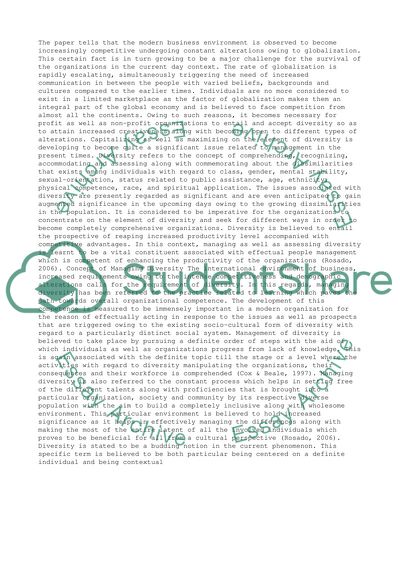Cite this document
(“Managing Diversity Research Paper Example | Topics and Well Written Essays - 4750 words”, n.d.)
Retrieved from https://studentshare.org/management/1396042-managing-diversity
Retrieved from https://studentshare.org/management/1396042-managing-diversity
(Managing Diversity Research Paper Example | Topics and Well Written Essays - 4750 Words)
https://studentshare.org/management/1396042-managing-diversity.
https://studentshare.org/management/1396042-managing-diversity.
“Managing Diversity Research Paper Example | Topics and Well Written Essays - 4750 Words”, n.d. https://studentshare.org/management/1396042-managing-diversity.


